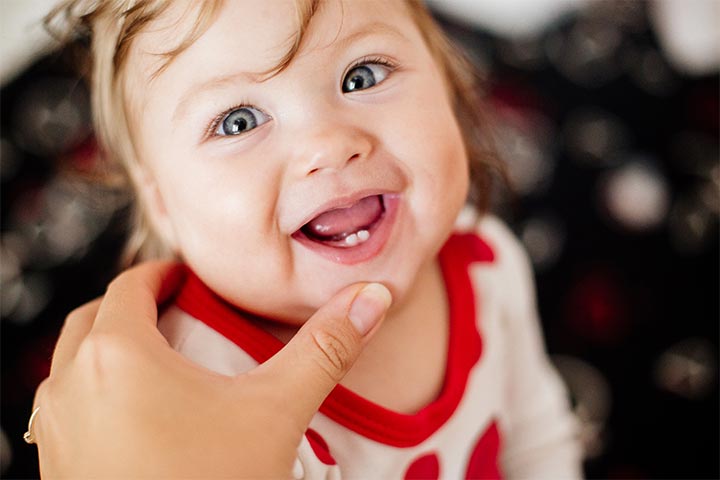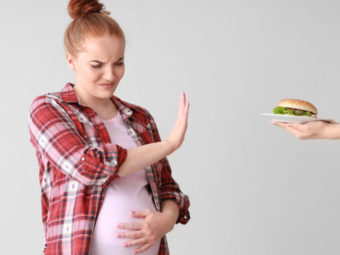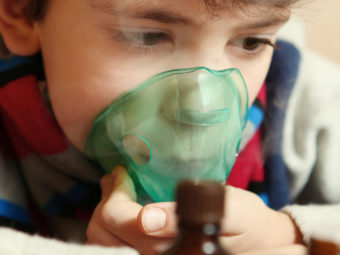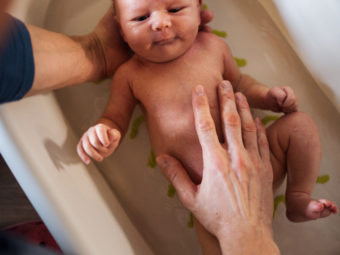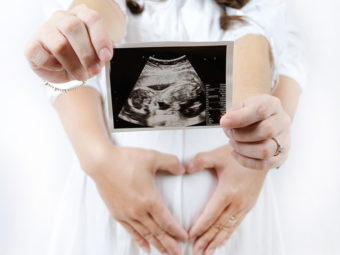
Image: iStock
Teething is a process where the first teeth of an infant (incisors) start erupting sequentially along the gum line. Babies begin the process of teething at around 6 months of age. As your baby grows and develops, they’ll teethe, which will continue until 36 months of age when the molars appear (1).
Seeing your baby’s first tooth emerge could make you cry out with joy but know that this could also be a painful time for them as they struggle and whimper to express their discomfort and pain. While your little one transitions into a new phase of their life, you might be stuck with a feeling of great excitement and confusion at the same time. So, how do you know if your baby is teething? How to deal with a teething baby at home? Wondering what signs to look out for to stay prepared? You’ve come to the right place! We are to help you with a comprehensive guide to teething in babies:
When Do Babies Start Showing Signs Of Teething?
Image: IStock
While neonatal or natal teeth have been observed in some babies at birth, the cases are extremely rare (2). Some babies may also begin teething at around 2 to 3 months of age. Early teething is not abnormal at all. Generally, the baby’s teeth continue to come in when they are about 6 to 12 months old. In some cases, it has been observed that the baby’s first tooth made its appearance not until they were one year old (3).
What Are The Symptoms Of Teething In Babies?
Image: Shutterstock
Many babies can go through teething without complaints. The signs and symptoms that babies exhibit when teething will vary. Here are some commonly reported early signs of teething to watch out for (4):
- Drools
Image: Shutterstock
When your baby starts teething, they’ll drool a lot more than usual. Even if the tooth is not yet visible, drooling is a sign that it is on the way. So, if your little one’s clothes frequently turn soggy (that may or may not cause a rash on the face), it’s a sign they have begun to teethe.
- Fussiness
Image: Shutterstock
Teething can cause swollen and tender gums that hurt. As a result, your baby may whine or cry and express their pain with crankiness. As your baby is unable to speak, it is natural for them to complain in the form of a display of irritable behavior.
- Gnawing On A Hard Surface
Image: IStock
As the teeth poke the baby’s gums, they might want to add a counter-pressure that relieves them of the discomfort. Your baby will reach out for whatever is available within their reach. These include toys, rattles, pacifiers, furniture, crib rails that they will put in their mouth and chew or bite to calm themselves down. It is important to keep hazardous objects away from them during this time, as they may grab onto small objects such as lego, coins, or bottle caps and end up swallowing them.
- Loss Of Appetite
Image: Shutterstock
Teething babies may express fussiness during feedings. As they reach out for nursing on the mother’s milk, the suction of the nipples can make their sore gums worse. Yes, breastfeeding can increase pain during teething. When your baby finds no relief, the recurrent pain may drive them to avoid eating altogether.
- Ear Pulling And Cheek Rubbing
Image: Shutterstock
This is a sign of ear infection or teething in babies. The area around the gums will be red and sore as the baby’s teeth start to come out. You may observe your baby tugging furiously at their ears and rubbing their cheeks as they share the same nerve pathways as the gum. This might give your little ones some relief from the discomfort. If you believe that an infection has triggered this symptom, you might want to speak to your doctor about it.
- Change In Sleeping Patterns
Image: IStock
As new teeth start to emerge, your baby may showcase unusual sleeping patterns. The pain and discomfort that your baby experiences may cause them to have a disrupted nighttime routine. So, frequent night wakings may be common in teething babies.
How To Comfort Your Teething Baby?
Image: Shutterstock
As a parent who is dealing with a baby who’s teething, you could be worried. While your baby takes some time to show off their pearly whites, you can seek relief for them by gathering some knowledge about this stage of their developmental process. It will help you keep a check on the associated anxiety and stress. Here are some things you could do to ease their discomfort (5):
- Clean their gums to maintain good oral hygiene. You can use fluoridated toothpaste and a toothbrush with ultra-soft bristles to decrease the risk of tooth decay.
- Massage their sore gums with a soft, wet cloth to relieve them of the pokes or irritation in the gum area.
- Get soft silicone teething toys or crib rail covers for your baby to nibble on. This will help prevent any injury to their mouth.
- Opt for lead-free paint on cribs and no-toxic teethers so that your baby does not end up ingesting harmful chemicals.
- Take your baby for regular dental check-ups so that they grow healthy teeth and preserve that beautiful smile.
- Some pain relievers may be useful to manage the teething ache. Consult your doctor before you administer them to your baby.
There are plenty of old wives’ tales surrounding baby teething, which could cause some worry to new parents. Fret not; most of these myths have no scientific backings, so it’s good to exercise sound judgment and take what you hear with a pinch of salt.
Also, teething may trigger changes in your baby’s behavior, but they are not a reason for serious health issues. If teething causes high fever and other health complications, you need to consult your doctor immediately. Care well for your baby during the teething period, and they will be back to their happy times, unbothered and carefree. How was your baby’s teething experience? Do share your stories with us in the comments section below!

